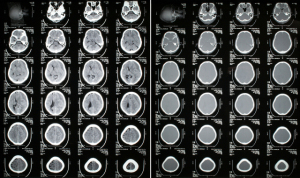by
John W. Mitchell, Senior Correspondent | October 14, 2015
A team of researchers at the Massachusetts General Hospital (MGH) Institute for Technology Assessment have determined that a CT scan in the emergency department (ED) is, indeed, providing vital diagnostic information to help doctors make the right decision about a patient’s condition.
“Our findings pertaining to physicians’ diagnostic confidence were compelling,” Dr. Pari V. Pandharipande, director of the MGH Institute of Technology Assessment and lead author, told HCB News. “Changes in physicians’ diagnostic confidence after CT were significant across all indications studied, and median confidence levels after CT were uniformly high (95 percent for all indications)."
The study, published online at the journal
Radiology, was conducted at four academic medical centers and involved nearly 1,300 patients. Nearly 250 ED physicians participated in pre- and post-CT surveys.



Ad Statistics
Times Displayed: 172944
Times Visited: 3140 For those who need to move fast and expand clinical capabilities -- and would love new equipment -- the uCT 550 Advance offers a new fully configured 80-slice CT in up to 2 weeks with routine maintenance and parts and Software Upgrades for Life™ included.
The research team discovered that after CT, physicians frequently changed their diagnosis. This included changes of patient diagnosis in 51 percent of cases involving abdominal pain; 42 percent in cases involving chest pain/shortness of breath; and 24 percent in cases involving headache.
“We found that physicians are rational judges of their own level of uncertainty,“ Pandharipande explained. “Together, these findings suggest that in general, physicians’ diagnostic confidence improves in logical and meaningful ways after CT.”
While the study did not factor in risks from radiation exposure or the cost of a CT scan, the findings offer important guidance for physicians. Pandharipande said the study provides new evidence upon which policymakers can formulate risk-benefit assessments when developing strategies to optimize CT use and patient benefit. She also said the study indicated there is room for protocol improvement.
“For example, looking at our results in a different light, in patients with headache, leading diagnoses did not change after CT in approximately 75% of patients,” said Pandharipande. “We need to figure out a way to eliminate such referrals without affecting individuals who are benefited by CT. In the future, decision support tools may help to address this problem.”
Such cost-benefit improvements are also important strategies in reducing costs and improving efficiency under health care reform.
According to the study, the use of CT in the ED has tripled in the past 20 years. The study was designed to provide a broad look at CT use in the ED across multiple diagnoses.
“ED physicians, who are often under substantial pressure to make decisions quickly and accurately, are frequently criticized for ordering too many CTs,” Pandharipande added. “We conducted this study to determine if key attributes of physician decision-making change after CT results become available in common ED settings.”

